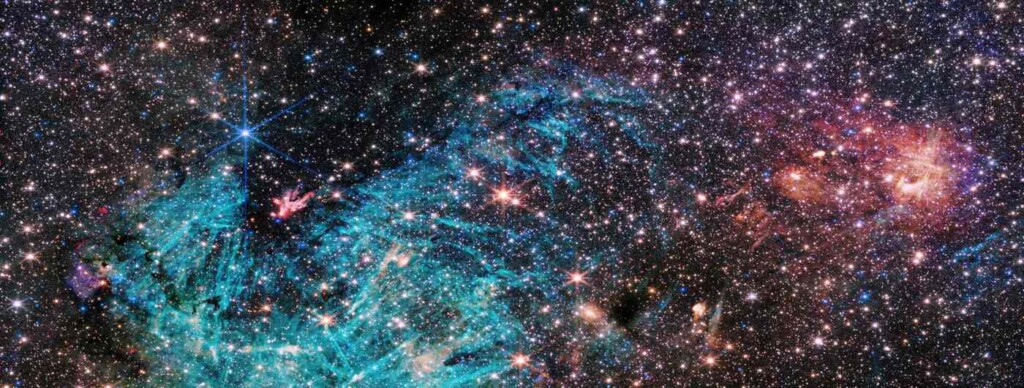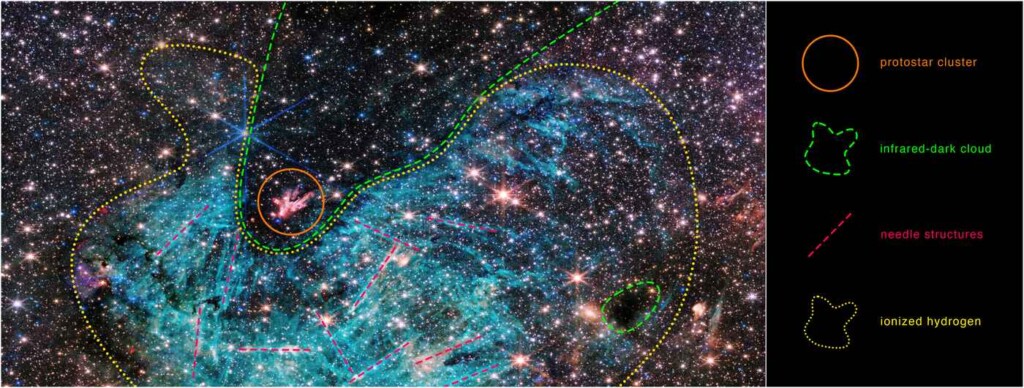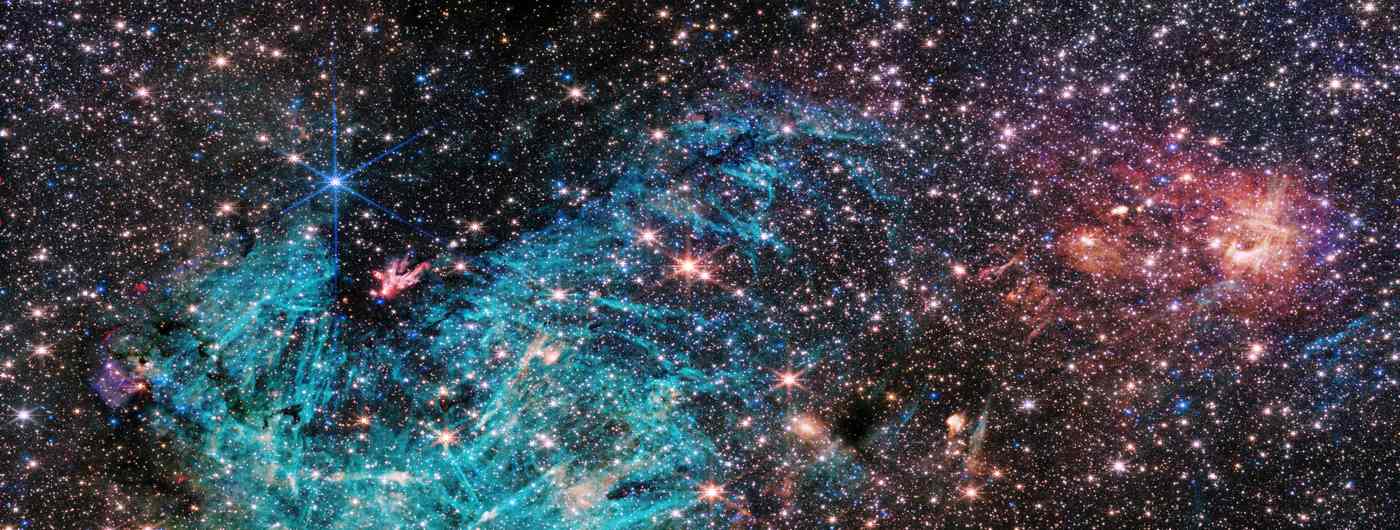
The James Webb Space Telescope recently took a picture of the C region of the Sagittarius constellation, deep in the galactic center of the Milky Way in order to find what’s going on inside.
Located about 300 light years from the supermassive black hole at the center of the galaxy, and 25,000 light years from Earth, Sag. C is a star-forming region that is filled with yet unexplained phenomena.
“The galactic center is the most extreme environment in our Milky Way galaxy, where current theories of star formation can be put to their most rigorous test,” said Professor Jonathan Tan, an astronomer at the University of Virginia.
The image was generated with Webb’s NIRCam (Near-Infrared Camera) instrument, which color-coded some of the interesting features as a result of seeing the light in such long wavelengths.
The great mess of cyan-colored material in the center is ionized hydrogen, which happens when some energetic particle collides with a hydrogen atom and causes it to become positively charged via a loss of its electron. The collision in the image could be coming from the blacker region that seems to be driving a wedge into the cyan color.
That black wedge is deceiving, for though it may appear to be emptiness, it’s actually the result of the material inside it being so dense that light from stars behind it can’t shine through. The material in question will coalesce into stars in the coming millennia.
MORE GORGEOUS IMAGES FROM WEBB: New Webb Image Captures Clearest View of Neptune’s Rings, Revealing the Ice Giant in Whole New Light
At the center of this regional collision lies a bright magenta protostar, just one of 500,000 estimated to be present in this image of Sag. C. This specimen is 30 times the mass of the Sun, and much of the darker areas will eventually be filled up by these bright characters.

One unexplainable phenomenon are the bright streaks of cyan that seem to be oriented in random directions. At present, neither Tan nor his colleagues have any idea what they are.
MORE LESSONS LEARNED FROM WEBB: X-rays and Webb Telescope Provide Dazzling Views of Space Invisible to the Unaided Eye
“The galactic center is a crowded, tumultuous place. There are turbulent, magnetized gas clouds that are forming stars, which then impact the surrounding gas with their outflowing winds, jets, and radiation,” said Rubén Fedriani, a co-investigator of the project at the Instituto Astrofísica de Andalucía in Spain.
“Webb has provided us with a ton of data on this extreme environment, and we are just starting to dig into it.”
SHARE This Galactic Insight With Your Friends Who Love The Webb Telescope…




















